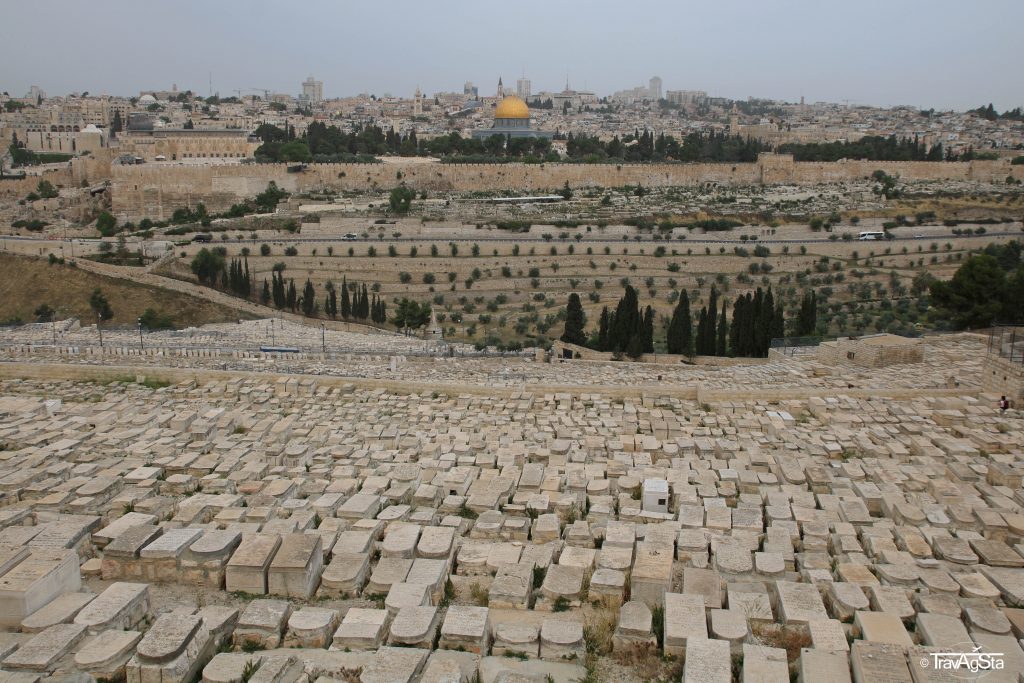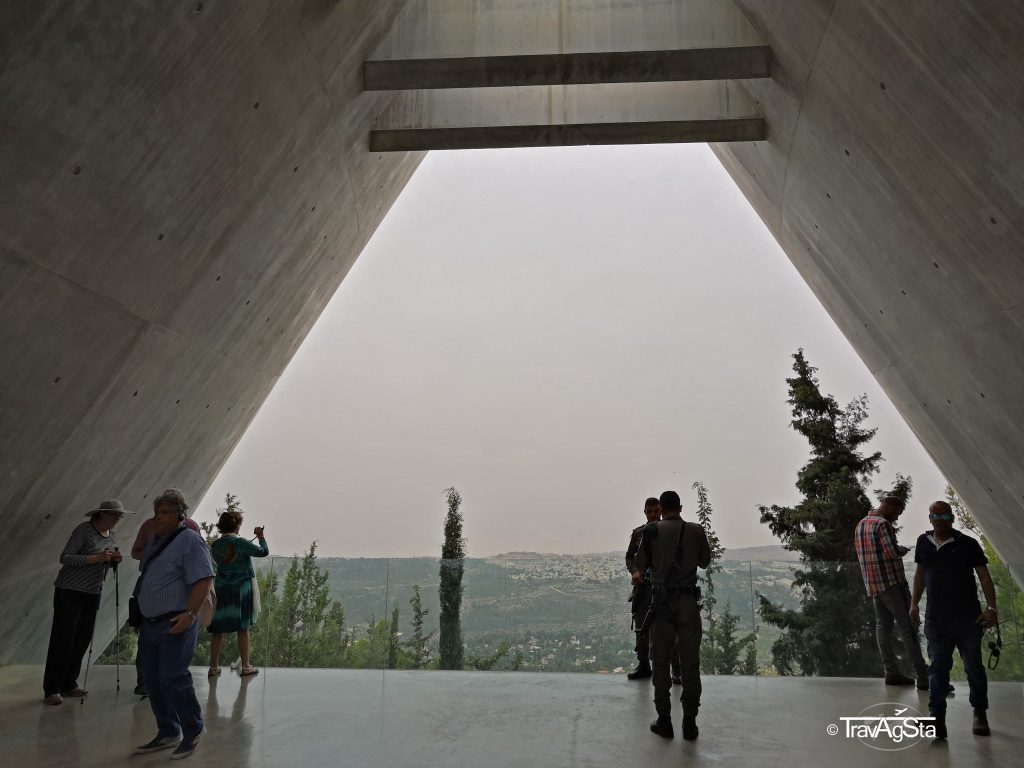You can spend days in Jerusalem and it doesn’t get boring. Untypical for us, we planned more time in Jerusalem than actually necessary so we could visit everything more relaxed and take some breaks.
It can be quite humid and sticky in Jerusalem. We were glad we could occasionally go back tot he hotel and rest a little bit.
St. George’s Cathedral Pilgrim Guesthouse
St. George’s Cathedral is an Anglican Cathedral built in 1899. Next to the cathedral, there’s a stone building used as a Guesthouse.
The garden is really pretty and well-maintained, almost paradisiac and an absolute contrast to the chaos outside its walls.
The rooms are simple and clean, the breakfast is really good. An absolute plus is its location. It’s a mere ten-minute walk from the Old Town. We were really happy with our choice and can totally recommend it!
American Colony Hotel
The American Colony Hotel is one of the ‚Leading Hotels in the World‘ and was just around the corner (well, near our Guesthouse). Unfortunately, we can’t afford the hotel but luckily a visit to their café was within our budget. It’s in a smaller building next to the hotel and has a nice inner court, offers food and at least during the daytime there’s no dress code required. If you’re somehow around the corner, go pay it a visit.
Mount Olive
A visit to Mount Olive shouldn’t be missed during any visit to Jerusalem. We didn’t walk up to the top as we saw a horde of people standing there. We really didn’t feel like being part of them. What’s even more important is the fact, that the view from the Jewish cemetery was even better. No masses and the view over the cemetery combined with the Old Town and the city wall was outstandingly beautiful.
New Jewish Quarter/Downtown Jerusalem
‚Western Jerusalem‘ or Downtown Jerusalem – choose the term for this part of the town on your own. Fact is, after our half day Bethlehem trip on Shabbat, we still had time in the afternoon to took a walk and it was an interesting one.
In some parts, it’s the poor, orthodox Jews living here, (at least regarding the conditions of the buildings) having many kids. It’s almost a cliché. It’s a totally different atmosphere and I can’t even describe it. Of course, we didn’t take any pictures. It’s forbidden on Shabbat and everyone should respect that.
A different kind of experience we hade: We met a group of radical Orthodox Jews who ran around the streets like hooligans. One of them started talking to us, asking whether we’re from here or not. We denied whereas he said, we don’t belong here. He left really quick afterwards.
The retarded people exist everywhere on this planet. And unfortunately, they seem to be quite many.
Furthermore, Downtown Jerusalem is the place with all the skyscrapers in the city, with many restaurants, shops, and bars. This is the part of Jerusalem which appears to be the most like a modern, western city.
Yad Vashem
Yad Vashem is a really impressive Holocaust Memorial and museum. Taking photos inside is forbidden and that’s understandable. Merely the architecture is the one thing I would love to have taken pictures of as it contributes to its amazing atmosphere.
What we really liked was the fact, that the whole exhibition wasn’t judgemental. Of course, the witnesses of this period and their stories won’t leave a dry eye and their stories are so shocking, that I ask myself how dead someone must be inside to come out there unaffected.
Yad Vashem is a must-see in Jerusalem!
Where to eat in Jerusalem
We can’t really say it about all restaurants, but yeah, actually we can. Don’t eat in the Old Town. It’s expensive with mediocre to bad food.
North of the Damascus Gate there are a few food stands. The skewers were tasty and cheap (we didn’t have any problems afterwards if you’re concerned about hygiene). A pita sandwich with two skewers costs 10 Schekel. Or you just eat in one of the restaurants in the surroundings. Shawarma or Falafel cost around 15-20 Schekel.
Click here to read Jerusalem Part I: The Old Town!

